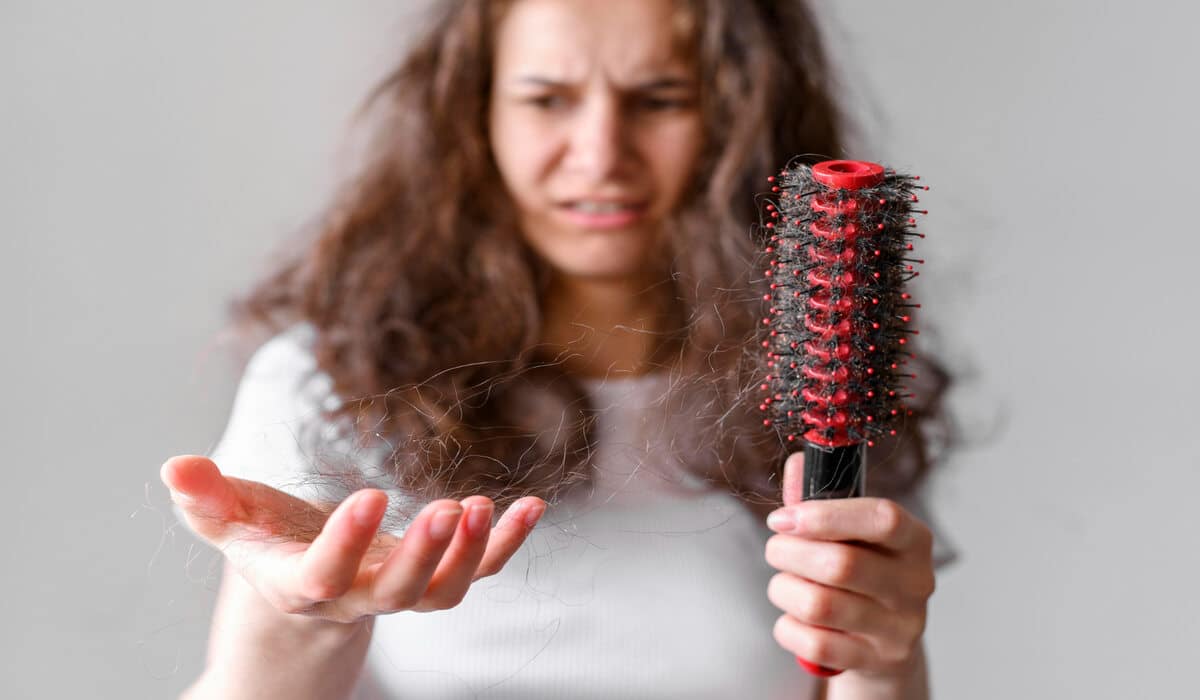Table of Contents
Nobody enjoys the thought of losing their hair. Hair loss can also cause individuals to experience various emotional symptoms, impacting self-esteem and confidence. However, understanding the underlying causes of hair loss is crucial in finding effective solutions. Androgenetic alopecia, commonly known as male or female pattern baldness, is one of the primary culprits behind hair loss.
Exploring Androgenetic Alopecia
Androgenetic alopecia affects individuals of all genders, albeit in slightly different patterns. In men, it often manifests as a receding hairline or thinning at the crown, while women may experience overall thinning across the top of the head while retaining the hairline.
Understanding these distinct patterns can help individuals recognize and address hair loss more effectively.
What’s Behind It All?
The development of androgenetic alopecia is influenced by a combination of genetic predisposition and hormonal factors. Testosterone, a hormone present in both men and women, plays a significant role in this process. When testosterone is converted into dihydrotestosterone (DHT) by the enzyme 5-alpha reductase, it can bind to hair follicles and disrupt the hair growth cycle, leading to hair loss.
How to Spot the Signs
Recognizing the early signs of androgenetic alopecia is crucial for initiating timely interventions. Hair loss typically begins in the late teens or early twenties for men and may occur later in women. It often follows a predictable pattern, with hair thinning and loss occurring in specific areas of the scalp. However, some individuals may experience diffuse thinning across the entire scalp. This can sometimes make the initial diagnosis more challenging.
If you have already been diagnosed with androgenetic alopecia, you may have first been tested for various other conditions and medical concerns. This is due to the signs of androgenetic alopecia mimicking the symptoms of other conditions that would first need to be ruled out.
What Can You Do About It?
While there is no cure for androgenetic alopecia, several treatment options are available to slow down hair loss and promote regrowth. Medications such as minoxidil (Rogaine) and finasteride (Propecia) are commonly prescribed to help maintain existing hair and stimulate new growth.
Additionally, advanced treatments like hair transplant surgery offer long-term solutions for restoring hair density and thickness.
You may also want to consider a medical wig covered by insurance.
Taking Control
Besides medical interventions, lifestyle modifications can play a significant role in managing androgenetic alopecia. Maintaining a balanced diet rich in essential nutrients, managing stress levels, and avoiding harsh styling practices can help preserve hair health and minimize further loss. Seeking support from healthcare professionals or support groups can also provide valuable guidance and encouragement.
Androgenetic alopecia may present challenges, but with the right knowledge and proactive approach, individuals can take control of their hair loss journey. By understanding the underlying causes and exploring available treatment options, you can reclaim confidence and maintain healthy, vibrant hair. Remember, you’re not alone in this journey, and support is available to help you every step of the way.
Conclusion
In conclusion, grappling with the prospect of hair loss is undeniably daunting, often triggering emotional distress and denting self-assurance. However, unraveling the mysteries behind this condition is paramount to finding effective remedies. Androgenetic alopecia stands out as a primary culprit, affecting individuals across genders albeit in varying patterns.
Understanding the intricacies of androgenetic alopecia sheds light on its origins, primarily influenced by genetic predispositions and hormonal imbalances. Recognizing the telltale signs early on facilitates timely interventions, crucial for mitigating its impact. While a cure remains elusive, a spectrum of treatments ranging from medications to advanced surgical procedures offers hope for managing androgenetic alopecia.
Yet, beyond medical interventions, lifestyle adjustments wield significant influence in navigating this journey. Cultivating a balanced diet, managing stress levels, and embracing gentle hair care practices contribute to maintaining hair health.
Crucially, support networks and professional guidance serve as pillars of strength throughout this journey. With knowledge at hand and a proactive stance, individuals can wrest control over their hair loss narrative, reclaiming confidence and vitality.
Remember, you’re not alone on this path. Support and personalized solutions await, empowering you to embark on a journey toward restored confidence and renewed self-assurance.
Ready to regain your confidence and take control of your hair loss journey? Schedule a consultation with Wig Medical today and discover personalized solutions tailored to your needs.


